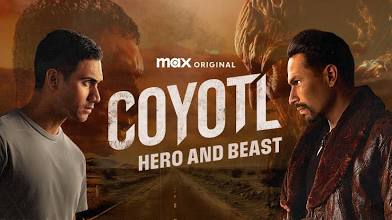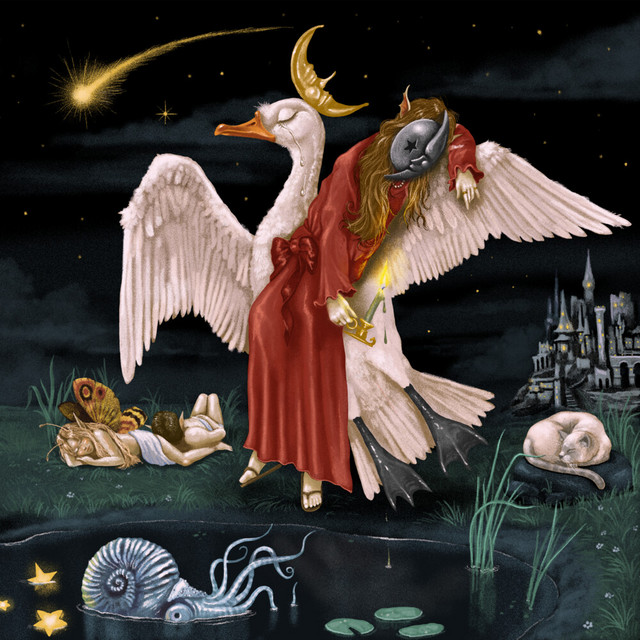The recent release of “Cóyotl: Hero and Beast” brings a unique and bold twist to the world of Mexican drama, seamlessly blending cultural folklore with modern-day conflicts. The show dives into a deep exploration of identity, survival, and the haunting legacy of the past. Set against the gritty backdrop of Mexico’s borderlands, “Cóyotl” takes viewers on an emotional rollercoaster, reflecting both the beautiful and violent realities of life near the border, as well as the ways people confront and embody mythic stories.
The plot follows Lupe Hernández, a struggling rancher who is forced to confront a dark family secret when he is thrust into the dangerous world of cartels and ancient legends. The character’s transformation into the mythical Cóyotl, a figure tied to Nahual folklore, forces him to balance his survival instincts with his ancestral roots. Hernández’s journey is both physical and psychological as he faces external threats and the internal conflict of reconciling his personal struggles with the weight of history.
At the heart of “Cóyotl: Hero and Beast” is the concept of duality. The series plays with the tension between the human and the beastly, the real and the supernatural. Much like the ancient tales that inspired it, the show explores the notion of transformation, questioning what it means to truly “become” something. It also touches on themes of addiction, trauma and the search for redemption. This is a show that asks its viewers to reflect on how our past, our choices, and our darkest fears shape who we are and who we become.
The cinematography, which blends expansive desert landscapes with hauntingly beautiful close-ups, creates a sense of isolation that complements the show’s tone. The eerie and atmospheric score, too, heightens the tension and the sense of foreboding. The mythological elements, specifically the portrayal of the “Cóyotl,” are intricately woven into the narrative, making the figure both a literal and metaphorical presence throughout the series. This merging of folklore and real-world problems is something that sets “Cóyotl” apart from other series in its genre.
In terms of acting, the performances in “Cóyotl” are strong. Hernández, played by a rising star in the Mexican film industry, captures the emotional turmoil of a man caught between two worlds with remarkable depth. His portrayal of Lupe’s internal battle is both gripping and heartbreaking, as he struggles not only with the brutal forces of nature and man but also with his own psyche. The supporting cast, which includes familiar faces in the Mexican entertainment scene, adds richness to the narrative, offering nuanced performances that add layers to the unfolding drama.
One of the strongest aspects of “Cóyotl: Hero and Beast” is its unapologetic look at the struggles faced by those living in border regions, without romanticizing the violence and trauma that often accompany such a lifestyle. It brings attention to the reality of cartels, poverty and the fight for survival, while also embracing the rich cultural heritage of the people who call this land home. Through Hernández’s transformation into the Cóyotl, the show skillfully asks whether it’s possible to escape one’s past or if we’re doomed to be consumed by it.
However, “Cóyotl” isn’t without its flaws. The pacing, at times, can feel a little uneven, with moments of intense action giving way to slower, more contemplative scenes that may lose some viewers’ attention. There’s entire scenes that could be deleted, and nothing would be lost from the plot. Additionally, the mythological aspects, though intriguing, can feel underexplored in parts, leaving viewers wanting more details into the origins of the “Cóyotl” legend. Nonetheless, these are minor quibbles in an otherwise captivating story that blends action, mysticism and cultural exploration.
“Cóyotl: Hero and Beast” is a series that doesn’t shy away from complexity or depth. It’s a blend of horror, drama and mythology that pushes the boundaries of what we expect from contemporary television. The series takes what is a repetitive theme in telenovelas, and freshens it up with a thrilling adventure. It’s not just a tale of a hero’s journey, it’s a deeply personal exploration of survival, identity and the spirits that haunt us, whether real or imagined. With its strong performances, beautiful visuals and compelling narrative, “Cóyotl” is definitely one to watch for those interested in a thrilling, thought-provoking experience that still stays true to the realities of Sinaloa.
As for the future, it’s clear that “Cóyotl” is setting the stage for a larger exploration of these ancient myths. A potential sequel or continuation seems inevitable, as the series leaves plenty of room to dive deeper into the world of myth and human nature. For now, the haunting smile of the “Cóyotl” lingers, leaving viewers wondering what’s next for Hernández and for all those who dare to embrace the beast within.










